Bats In The News
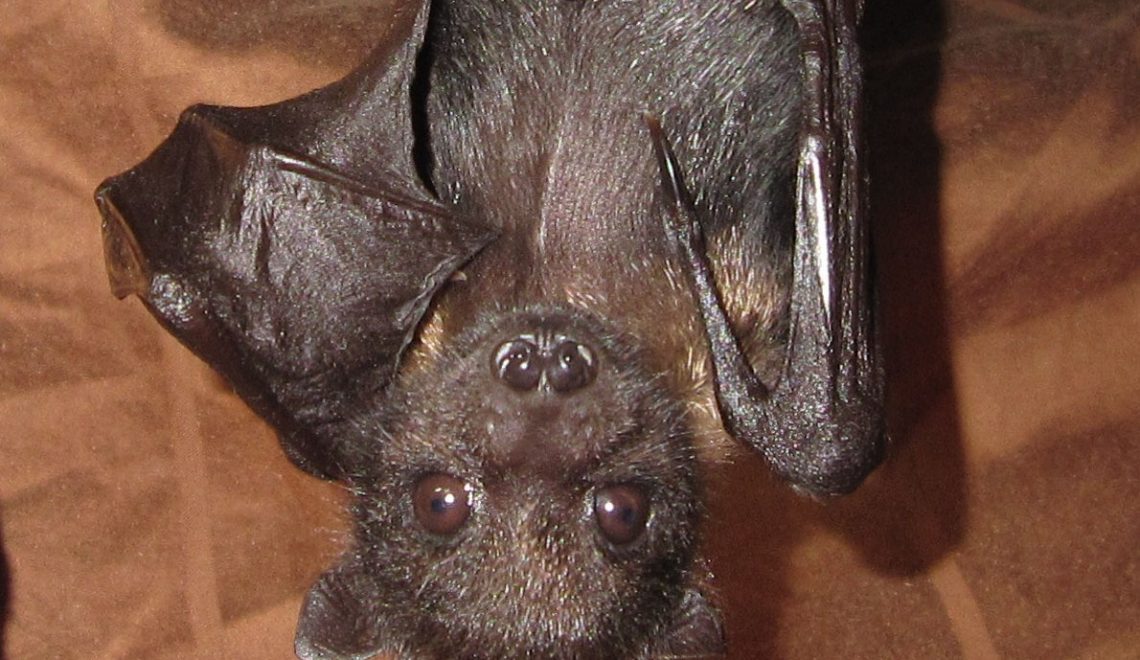
By Linda Martinson
Bats are in the news these days as the natural hosts of the virus SARS-CoV-2 causing Covid-19. Hundreds of coronaviruses have been found in several bat and bird species, and sometimes they are the source of a particular zoonotic disease that can jump from animals to humans. These zoonotic diseases, or zoonoses, are fairly common accounting for 60 percent of known infectious diseases and 75 percent of emerging infectious diseases. Covid-19 is an infectious zoonose that is particularly dangerous because it is persistent and highly contagious, but there is no current threat of coronavirus transmission by bats in the United States.
The first discovery that coronaviruses are zoonotic and that they originate among bats was after the first outbreak of Severe Acute Respiratory Syndrome (SARS) in China in 2003, later confirmed as caused by a coronavirus and labeled SARS-CoV-2. But for thousands of years before that, a parasite that was an ancestor of the coronavirus confirmed in 2003 inhabited horseshoe bats in Southern China with no adverse effects to the bats or apparently to humans. Eventually, researchers found hundreds of other coronaviruses in as many as 1,400 species of bats then found in six continents. They also determined that coronaviruses and other virus families have been co-evolving with bats for millions of years, not as long as bats have been around (50+ million years), but much longer than the span of human civilization (100 to 200 thousand years).
The coronavirus family of viruses has been flourishing through the years as different strains of the virus have simultaneously co-infected countless individual bats. The bodies of bats have been described as “virus blenders” because they continuously create new strains of their resident viruses, some of them quite robust. This process of virus blending occurs without making bats sick, because bats are the only mammals that can fly. Evolving to function in two environments, ground and sky, required the development of a super strong immune system able to quickly and efficiently repair cell damage and to fight off and/or to live with viruses without continuing inflammations.
Almost taking a line from science fiction, these coronaviruses that have co-evolved with bats and birds for million of years have developed into new strong hybrid viruses that occasionally mutate dramatically and leap into new species for example, another injured animal in close contact with a bat or into a person collecting bat dung (guano) for use as fertilizer who touches sore on his face. When this leap occurs, as it has into humans recently, the resulting diseases can be severe and sometimes deadly because the virus has not previously infected its new host species. This is why our immune systems struggle to fight off Covid-19 and often lose the battle. One doctor has described the effect of this rampant virus on humans worldwide as a “tsunami that has overwhelmed us”.
Bats per se are not dangerous to humans, and they are certainly not the only animals that can transmit diseases to humans. There are, however, numerous species of bats. As a percentage of the total species of mammals, bats account for almost 25%; the numerous rodent species account for almost 50%; and all other mammal species account for the remaining 25%+. Over 1500 species of bats have been identified so far, living almost everywhere except the polar areas and some islands. The world’s smallest mammal is the bumblebee bat that weighs less than a penny. The fox bat or flying fox, genus Pteropus, has a wingspan of up to five feet. Bats can be found in several diverse environments including the tropics, cities, farmland, and areas like our mountains and forests.There are two sub- groups of bat species: Microchiroptera and Megachiroptera. Members of the Megachiroptera sub-group are called “flying foxes” because of their fox-like faces, and they are found only in Africa, southeast Asia and Polynesian islands of the South Pacific. Microchiroptera bats are highly varied in appearance and are found worldwide. Bats are generally environmentally specific, for example no bat species is found in both the eastern and western hemispheres.
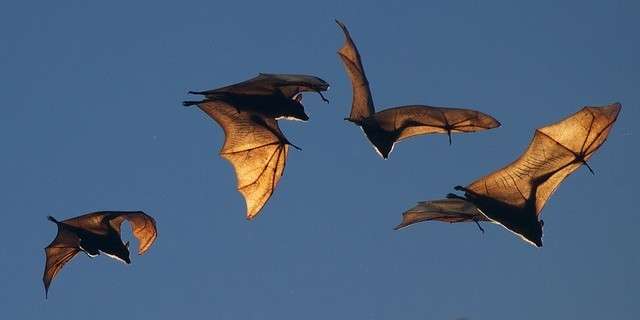
With their impressive diversity and geographic spread, bats have an critical role in worldwide ecosystems and economies. For example, about 30% of bats, mostly tropical, play a critical role in the pollination of bananas, dates, cloves, vanilla, coconut, avocados, cocoa, and mangos. About 70% of bat species, mostly in northern climates, are insectivores and have a major role in controlling agricultural insect pest populations. For example, a nursing female bat can consume almost her body weight in insects in a single night. Bats save the U.S. agricultural industry an estimated $53+ billion per year by reducing both specific insect damage to crops and the need for pesticides. One example: bats save the U.S. corn industry over $1 billion annually in pest control. Bat guano is harvested for fertilizer, and about 80 medicines have plant sources that rely on bats for fertilization. Seeds scattered by bats accounts for up to 95% of forest regrowth on cleared land. doi.gov>blog>13-facts-about-bats
Bats are primarily nocturnal mammals, and they depend upon their strongly developed sense of echolocation to locate their food, which is mainly insects; to navigate; and to avoid obstacles. They use their strangely elongated noses as megaphones to emit high-pitched shrieks as they fly, and they use their large ears to capture the echoes that reflect from the objects around them. They also have a prominent flap in front of their ear canals called atragus, analogous to the small flap in front of our ears, that apparently helps with echolocation. Bats are so skilled at navigating their night world with echolocation that they can avoid obstacles as thin as a thread in total darkness.
Bats are highly mobile, social and long lived, and can live up to 20 to 30 years in the wild. Like all other mammals, they give birth to live young, usually only one pup every year. Bat pups are tiny when born, but they grow up fast; most species of bat pups are flying and hunting on their own within a month. Bats typically copulate in the fall, but ovulation and fertilization are delayed until a few days before the females emerge from hibernation, and the young bats are born during the summer. Many species of bats form maternity colonies to collectively rear their young, often in caves, but sometimes inconveniently in attics. Occasionally, female bats will nurse any pup that seems hungry, but generally they only nurse their own pups.
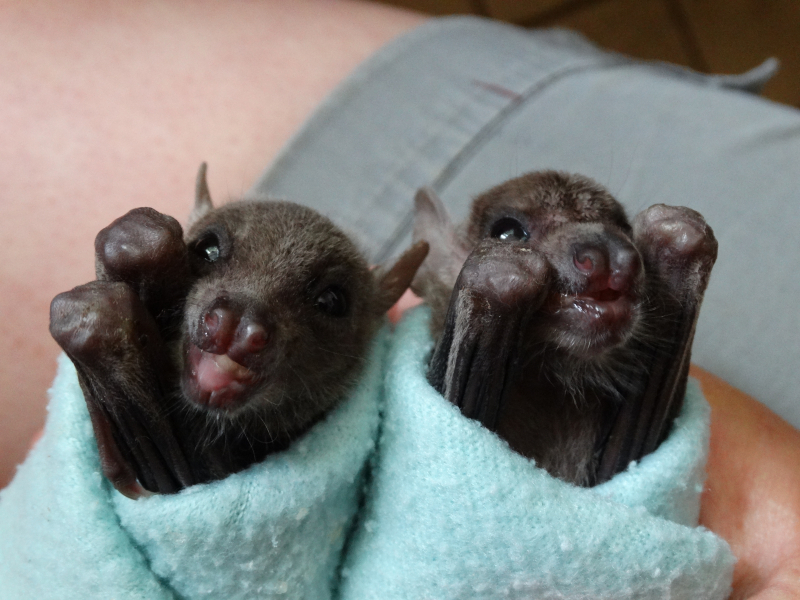
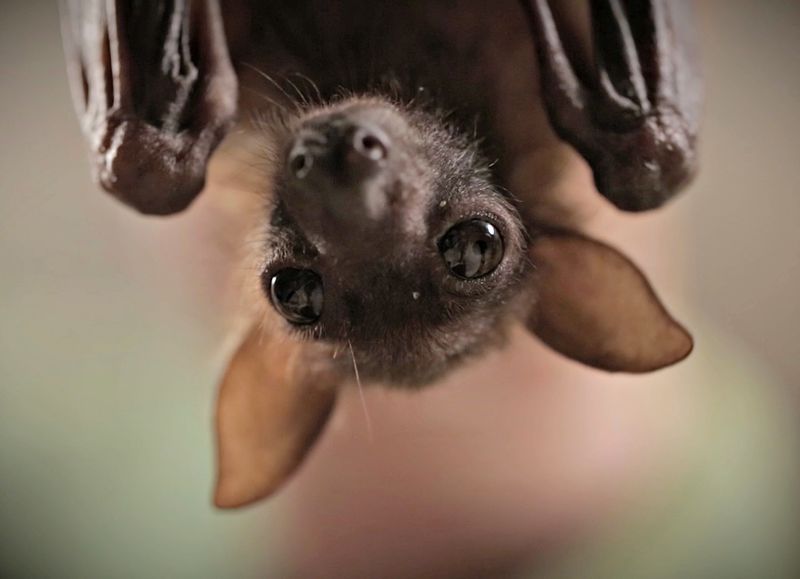
Bats are the only mammal that can truly fly, not just glide, and fossil records indicate that this was a unique evolutionary trait that occurred only once, early in the 50+ million years of bat history. Bats belong to the order Chiropter, a Latin word meaning “hand wing.” This is an apt label because bat wings are modified hands, different from any other mammal, and their wing bones are actually elongated fingers. We humans have small flaps of skin at the base of our fingers; bats have thin pliable membranes between their long fingers that extend their entire length, and they can’t move their fingers independently. Their forearms are also elongated, and their arm muscles open up their hand/wings to fly or to wrap around their bodies to sleep. Their thumb is a modified claw extending from their wrist and it is not attached to the wing membrane so they can use it to crawl. And there’s more: the hind legs and tail of bats are also joined by the wings, but their knees are completely backwards so they can rotate their back limbs and hang upside down by their toes.

Charles Darwin wrote in The Origin of Species, 1859, that the evolution of a flying bat was too difficult to imagine and bat flight is certainly a complex and elegant functional system. Bats in flight have more maneuverability than birds because they can dramatically change the shape of their wings as they fly and birds cannot. Here is a link to a well written explanation of the difference between bat flight and bird flight with a gif that clearly illustrates the maneuverability of bat wings: http://www.koryoswrites.com/nonfiction/bat-flight-versus-bird-flight .

Flying is physically challenging, requiring a metabolic rate that is 3 to 5 times greater than the energy required for similar-sized terrestrial mammals to move around vigorously. Some bats and birds are remarkable for being strong athletes and for having both high energy metabolism and long lifespans—an enviable combination. Recent research indicates that the bats that live the longest have chromosomes that don’t shorten with age. They have evolved with a unique genetic process to lengthen their chromosomes, specifically the telomeres at the ends. These results are from a study conducted by Emma Telling at the University College Dublin and published in February 2018, “Growing Old Yet Staying Young”.

Bats are indeed unique animals and having been around for 50+ million years, they have had plenty of time to evolve into their 1500+ species. And hummingbirds, another unique animal, have been around for about 42 million years and their family tree from 22 million years ago has been mapped for 338 known species. A slight diversion here: both bats and hummingbirds share the same two classifications of body types. They are both endotherms that have high metabolisms; primarily generate their own warmth; and have to feed voraciously and they are also poikilothermic, i.e., both animals at times enter an inactive state with a variable, usually lower, body temperature. Having two classifications of body types is unusual, and so is having two animals share the same two classifications. This is a rather unusual combination, see the chart below.

There are, of course, significant different between the two species. Most notably, bats sleep during the day when hummingbirds are active and, although they go into a torpor state during the nights, hummingbirds fly south for the winter. Bats are quite active at night catching an enormous amount of insects, but most bat species go into a state of hibernation in the winter. Many species of bats also go through daily poikilotherm periods of torpor, during which their metabolism is greatly reduced. They have a high body temperature when they are awake during the night, but their temperature decreases during the day when they are sleeping. When endothermic mammals like bats hibernate, their metabolic rate is drastically lowered and they stop regulating their body temperature letting it drop to the temperature of their hibernation location. Bats usually cluster together, often in caves, during hibernation to help them stay warm.
Wouldn’t the photo below make a challenging jigsaw puzzle?
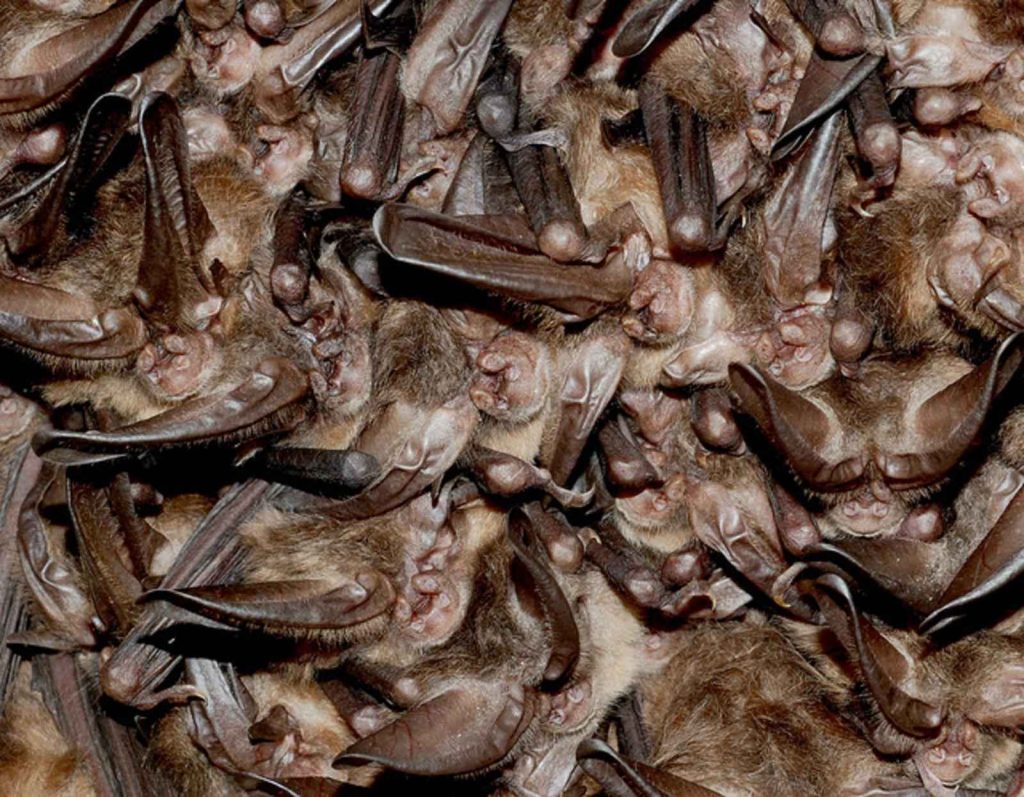
More animals live in the Southern Appalachians mountains than in any area of eastern North America, and over 70 species of mammals have been documented in North Carolina and Virginia along the Blue Ridge Parkway. This includes 11 species of bats, listed below. There are 17 species of bats total in North Carolina and 16, in Virginia identified to date.
Blue Ridge Parkway Mammal Checklist January 2018 Bats
Order Chiroptera Family Vespertilionidae A eleven species found in NC
- Rafinesque’s Big-eared Bat (Corynorhinus rafinesquii rafinesquii)
- Virginia Big-eared Bat (Corynorhinus townsendii virginianus)
- Big Brown Bat (Eptesicus fuscus)
- Silver-haired Bat (Lasionycteris noctivagans)
- Eastern Red Bat (Lasiurus borealis)
- Hoary Bat (Lasiurus cinereus)
- Eastern Small-footed Myotis (Myotis leibii)
- Little Brown Bat (Myotis lucifugus)
- Northern Long-eared Myotis (Myotis septentrionalis)
- Indiana Bat (Myotis sodalis)
- American Perimyotis (Perimyotis subflavus)
The most common bats identified in our area in Transylvania County are the little brown bat (Myotis lucifugous) and eastern pipistrelle (Pipistrellus subflavus), curiously not listed on the Blue Ridge Parkway checklist. Other bats often found in Western North Carolina area include: Virginia Big-eared bat, Indiana bat; Eastern red bat; and Northern long-eared bat, and these four species now have been listed as endangered. Sadly, there is now a fifth common bat in WNC on the endangered list: the little brown bat. It was listed as endangered shortly after the January 2018 checklist above was compiled. This count, which may not be complete, indicates that many of the bats in our area area are now endangered.
The little brown bat (Myotis lucifugus) is a species of mouse-eared microbat found in North America. It is small with glossy brown fur, and it has the longest known lifespan of any bat in the wild, up to 30 years. Until recently, the little brown bat was one of the most common bats in North America. For example, in her book published in 2005, Dr. Frick-Ruppert described an hour-long event one July in the Pisgah National Forest in Western North Carolina during which eleven brown bats and two eastern pipistrelles were captured, measured, and released. They are indeed little, weighing less than half an ounce. Their body length is 2.5 – 5 inches and their wingspan is 8 – 11 inches.

After 2018 however, the little brown bat species, once so abundant, was listed as endangered because its population in many hibernation areas had declined by over 90% chiefly because of a fungal disease called white-nose syndrome. Fifteen of North America’s 47 bat species have been affected by this disease which has killed an estimated more than 6 million bats since 2006. The disease spread to North Carolina in 2011, and it is now found in 30 states. White-nose syndrome is named for a distinctive white growth caused by the fungus Pseudogymnoascus destructans. The growth spreads around the muzzles and on the wingsof hibernating bats, and they die because it increases, by almost double, the amount of energy they use during winter hibernation. It also causes physiologic imbalances that inhibit their normal body functions. Bats must carefully ration their energy supply during hibernation to survive without eating until spring. If they use up their limited energy reserves too quickly, they can die, and white-nose syndrome causes nearly 100% mortality in many hibernation sites. United States Geological Survey January 5, 2015

2013 US Fish and Wildlife photo
There is, however, some promising research being conducted based on genomic sequencing that revealed that the Pd fungus is missing an enzyme that lets it repair its own DNA after exposure to ultraviolet light. Conducting ultraviolet treatments of hibernation sites before the bats begin using them has had some positive results in reducing the fungus…welcome news! (https://www.nrs.fs.fed.us/pubs/55557)
Of the 1500 + species of bats identified so far in the world, about 92% have been assessed by the International Union for the Conservation of Nature (IUCN) and the estimate is that almost a third of them are considered either threatened (i.e., vulnerable, endangered, or critically endangered) or data deficient, indicating the need for much more research and conservation efforts. Although bats are ecologically critical across the world, they also are among the most under-studied of mammals. Clearly, more research and conservation efforts are needed, however, but again, there is no current threat of coronavirus transmission by bats in the United States.
None of the bats species in North America threaten human health. Indeed, bat researchers have advised scientists in the United States to stop studying bats right now, because of the threat that they would infect bats with coronavirus instead of the other way around, i.e., the virus could spill back from humans to other species of bats on this continent. Although the chance of the coronavirus mutating from people to North American bats is low, it does threaten bat species already under severe pressure from white-nose syndrome. Researchers studying bats in North America, particularly those working hard to eradicate white-nose syndrome, are torn between saving bats from the fungal disease and making sure they are not infected by the virus SARS-CoV-2 from human contact.
Several researchers feel that bats already weakened by white-nose syndrome could be more susceptible to the virus, but that it is more critical to continue the ultraviolet light experiments. Still others feel that infecting the bats of North America by humans that have contracted a virus from bats that originated across the world is a remote possibility, but is it more remote than humans contracting a virus from bats originally?
“Say ah”
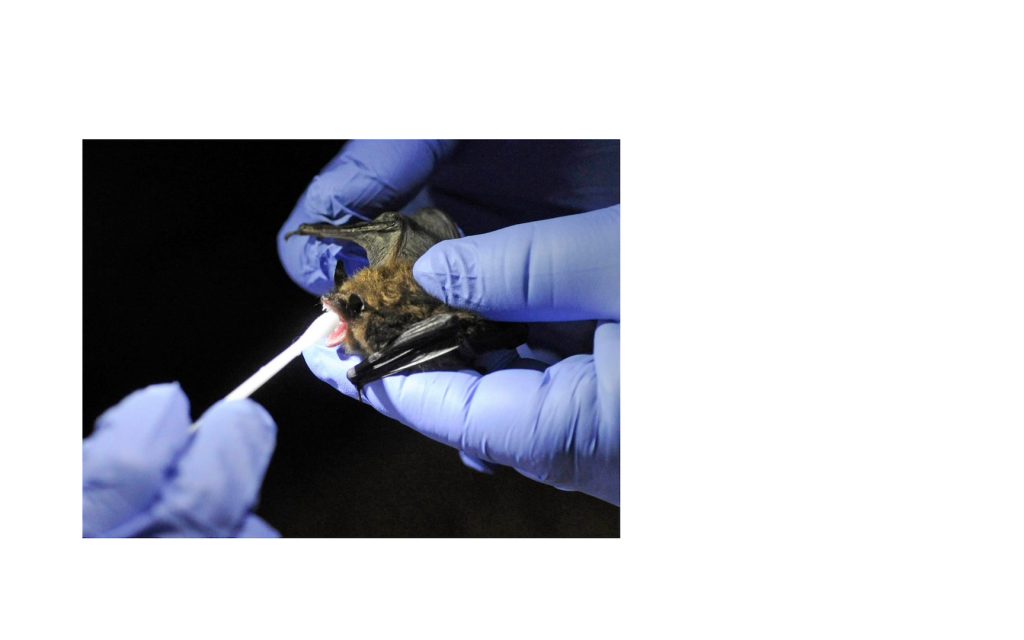
Bat species have been separated by geography and epochal time for such a long time that all known types of bat coronaviruses exist in quite isolated and specific parts of the world. Bruce Patterson, a research scientist at the Field Museum of Natural History in Chicago, explained that the horseshoe bats in China that originally harbored the SARS coronaviruses and any species of bats in North America last shared a common ancestor more than 50 million years ago. He stated conclusively, “They are about as different as bats get from one another.” Reference: “U.S. advises suspending bat research over concern coronavirus could infect North American species” Michelle Z. Donahue, Washington Post April 10, 2020. And here is a link to another informative reference quoting Bruce Patterson’s work:
https:// www.cnn.com/2020/04/22/world/leaf-nosed-bats-discovery-scn/index.html

Meanwhile, the rest of us must cheer for the bats and hope that nothing further disturbs them; their good work in the environment; or their resident coronaviruses. And most important, let’s hope that their splendid diversity continues to brighten our night skies.
Other references:
Bat Conservation International batcon.org
Bats of North Carolin North Carolina Wildlife Resources Commission www.ncwildlife.org
“U.S. advises suspending bat research over concerns coronavirus could infect North American species”. Washington Post April 10, 2020 bu.edu Boston University Bat Laboratory
Chu, Daniel et al Journal of Virology September 2011 Scientists estimate that more than 6 out of every 10 known infectious diseases in people can be spread from animals, and 3 out of every 4 new or emerging infectious diseases in people come from animals.
United States Geological Survey “How does White-nose Syndrome Kill Bats?” January 5, 2015.
Wertheim, Joel O. Journal of Virology April 2013 Jun;87(12):7039-45. doi: 10.1128/JVI. 03273-12. Epub 2013 Apr 17.
Kupferschmidt, Kai. Science Magazine June 2017. “Bats are more significant sources of viruses than other species.” Also reported in Nature Magazine.
New Yorker article “From Bats to Human Lungs, The Evolution of a Coronavirus” by Carolyn Kormann March 27, 2020
Science March 16, 2020. “Substantial Undocumented Infection Facilitates the Rapid Dissemination of Novel Coronavirus (SARS-CoV2).”
Ruiyun, Li et al
The Scientist May 31, 2018.
“Predicting Future Zoonotic Disease Outbreaks: A step-by-step study of diseases that jump species gives subtle clues about future epidemics”. Ashley Yeager
Sierra Magazine March 7, 2018 “Bats May Be Poised for a Comeback From White-Nose Syndrome.” Lela Nargi
COVID-19 is an emerging, rapidly evolving situation.
Get the latest public health information from CDC: https://www.coronavirus.gov .
Get the latest research from NIH: https://www.nih.gov/coronavirus.
Featured image photo credit: doi.gov






19 comments